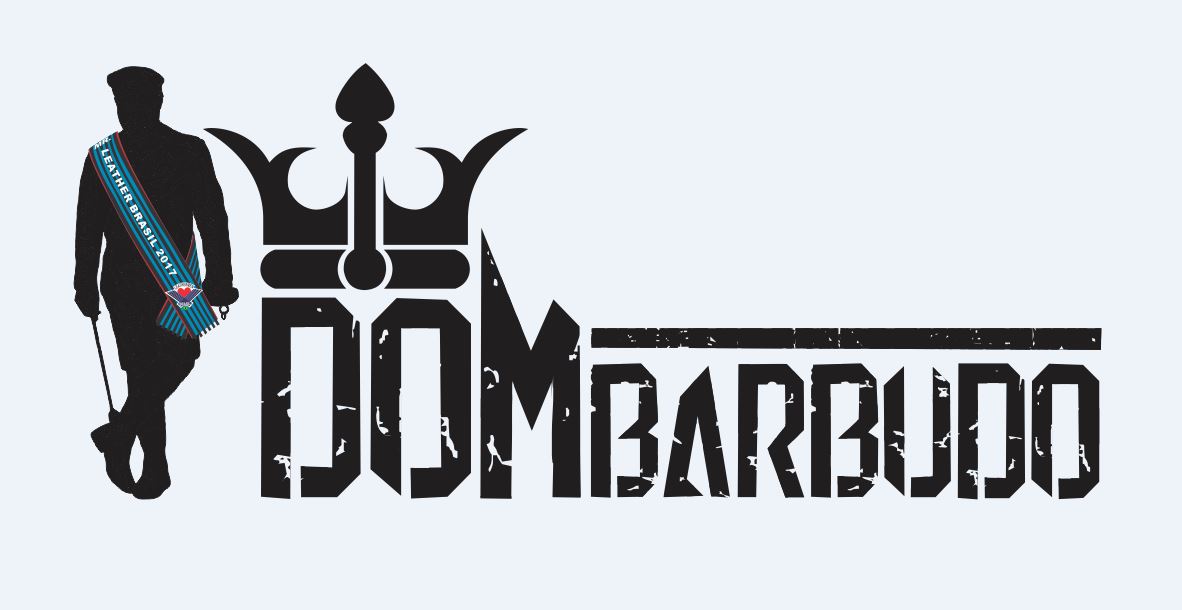📖 1 – TERMO E CATEGORIA
OBJETIFICAÇÃO
CATEGORIA: CONCEITO Objetificação se enquadra como um conceito dentro do BDSM, pois trata da transformação de uma pessoa em um objeto de prazer, servidão ou adorno dentro de uma dinâmica consensual de dominação e submissão.
🔑 2 – PALAVRAS-CHAVE
Desumanização erótica, uso objetificado, submissão extrema, fetiche de reificação, servidão total, controle absoluto, adestramento, humilhação consensual, poder e posse, dinamização do corpo.
🔠 3 – DEFINIÇÃO
Objetificação é a prática dentro do BDSM em que um submisso é tratado como um objeto, seja para prazer, uso ou exposição. Essa prática pode variar desde a imobilização completa até a transformação simbólica do submisso em algo específico, como um móvel, uma peça decorativa ou uma ferramenta sexual.
🔎 4 – SIGNIFICADO
A objetificação vai além da submissão tradicional, pois retira da pessoa sua autonomia simbólica, reforçando o controle absoluto do dominante. Em sua forma mais intensa, o submisso aceita ser tratado sem identidade própria, existindo apenas para satisfazer as vontades do dominador. Essa prática pode ser realizada por meio de posturas forçadas, imobilização, fantasias específicas ou regras rígidas que limitam comunicação e movimentos.
🔗 5 – APLICAÇÃO
A objetificação pode se manifestar em diferentes níveis, desde um jogo temporário até uma dinâmica mais intensa e prolongada. Exemplos comuns incluem transformar o submisso em um banquinho humano, um suporte para copos, um manequim ou um acessório decorativo. Pode envolver uso de mordaças, coleiras, amarras e regras de silêncio, garantindo que o submisso cumpra sua função sem desvio de comportamento.
🧠 6 – IMPACTO PSICOLÓGICO
Mentalmente, a objetificação pode provocar uma forte sensação de entrega e pertencimento no submisso, aprofundando sua submissão. O domínio absoluto do dominante pode gerar prazer tanto na sensação de posse quanto na perda de autonomia do submisso. No entanto, deve haver cuidado para que a prática não leve a desconforto psicológico prolongado ou impactos negativos na autoimagem do submisso.
📢 7 – RELAÇÃO COM OUTROS TERMOS
A objetificação se relaciona diretamente com práticas como Humilhação Erótica, Bondage Total, Pet Play, Servidão Extrema e Dominação Absoluta.
🔒 8 – SIMBOLOGIA E REPRESENTAÇÃO NO BDSM
A prática pode ser representada por coleiras de metal, posições rígidas e submissos em exposição pública como objetos decorativos ou funcionais. Símbolos de posse, como etiquetas e tatuagens, também podem ser usados para reforçar o conceito de objetificação.
🤝 9 – NEGOCIAÇÃO
É essencial definir os limites da objetificação com clareza antes de iniciar a prática. O submisso deve expressar até onde está disposto a ir, e o dominante deve garantir que a experiência seja segura e prazerosa para ambos. Palavras de segurança e pausas para avaliação são fundamentais.
💊 10 – CUIDADOS ANTES E DEPOIS
Antes da prática, é importante alinhar expectativas e preparar o ambiente para garantir conforto e segurança. Após a sessão, o aftercare é essencial para reestabelecer a identidade do submisso, reforçar sua autoestima e assegurar bem-estar emocional.
🚀 IMPACTO FINAL
Objetificação é entrega extrema e submissão pura, onde o prazer vem da anulação do ego e da transformação em um objeto de posse e uso absoluto.
🔍 6 PERGUNTAS COMPLEMENTARES
🔍 1. Por que a objetificação excita tanto em uma relação BDSM?
Porque ela elimina a ilusão de igualdade. Quando o submisso é tratado como objeto, ele não pensa — ele serve. É ali que mora o prazer: na anulação do ego, na transformação em posse, em coisa. Não é sobre desumanizar. É sobre reprogramar a mente para entender que prazer não vem do que se é, mas do que se representa para o Dominador.
🔍 2. Qual a diferença entre fetichizar o corpo e objetificar um submisso?
Fetichizar é admirar partes. Objetificar é usar o todo. Um sub pode ser adorado por suas mãos, seu rabo, sua boca — mas quando é objetificado, vira cadeira, tapete, urinol, decoração. Não existe “eu” — só função. A diferença é que o fetiche excita. A objetificação domina.
🔍 3. Como transformar a objetificação em um ritual de adestramento diário?
Dê funções. Crie comandos. “Hoje você é meu descanso de pés.” “Amanhã será suporte de bandeja.” Quanto mais o submisso aprende a servir calado e imóvel, mais internaliza que não é protagonista, é recurso. A repetição cria obediência automática. A função molda o comportamento. E no fim do dia, ele não vai perguntar quem ele é, mas pra que ele serve.
🔍 4. Quais objetos simbólicos ajudam a reforçar a sensação de posse durante a objetificação?
Coleira é básico. Mas vá além: almofada onde o Dominador senta. Taça presa entre as coxas. Corrente conectada à base do plug. Tudo que transforma o corpo em mobília, apoio ou acessório. O importante não é o objeto em si — é como ele marca o submisso como coisa útil. Quanto mais funcional for a cena, mais profundo o condicionamento.
🔍 5. Existe erotismo na negação de identidade durante a objetificação?
Sim — e é onde mora o verdadeiro tesão. Tirar o nome. Tirar a voz. Tirar a autonomia. Deixar só o corpo em posição, servindo. O submisso não é mais alguém — é algo. E o cérebro aprende a sentir prazer em ser ignorado, desde que continue útil. Isso não é desprezo. É domínio psicológico elevado.
🔍 6. Como usar a objetificação para aprofundar o vínculo entre Dominador e submisso?
Usando o silêncio como linguagem. A imobilidade como prova. A utilidade como conexão. Quando o submisso aguenta horas em posição, calado, atento ao que o Dominador precisa — ele não está distante. Está mais próximo do que nunca. Cada segundo sem ser visto como humano o transforma num espelho de entrega. E esse tipo de vínculo não se desfaz. Ele marca.

📖 1 – TERM AND CATEGORY
OBJECTIFICATION CATEGORY: CONCEPT
Objectification falls under the concept category within BDSM, as it involves transforming a person into an object of pleasure, servitude, or adornment within a consensual dynamic of dominance and submission.
🔑 2 – KEYWORDS
Erotic dehumanization, objectified use, extreme submission, reification fetish, total servitude, absolute control, conditioning, consensual humiliation, power and possession, body dynamization.
🔠 3 – DEFINITION
Objectification is a BDSM practice where a submissive is treated as an object, whether for pleasure, utility, or display. This practice can range from complete immobilization to the symbolic transformation of the submissive into something specific, such as a piece of furniture, a decorative item, or a sexual tool.
🔎 4 – MEANING
Objectification goes beyond traditional submission as it removes symbolic autonomy from the person, reinforcing the dominant’s absolute control. In its most intense form, the submissive accepts being treated without personal identity, existing solely to satisfy the dominant’s desires. This practice can be executed through forced postures, immobilization, specific fantasies, or strict rules that limit communication and movement.
🔗 5 – APPLICATION
Objectification can manifest in different levels, from a temporary roleplay scene to a more intense and prolonged dynamic. Common examples include transforming the submissive into a human stool, a cup holder, a mannequin, or a decorative accessory. It may involve the use of gags, collars, bondage, and silence rules to ensure the submissive fulfills their function without behavioral deviation.
🧠 6 – PSYCHOLOGICAL IMPACT
Mentally, objectification can evoke a deep sense of surrender and belonging in the submissive, intensifying their submission. The dominant’s absolute control can generate pleasure both in the feeling of possession and in the submissive’s loss of autonomy. However, care must be taken to ensure that the practice does not lead to prolonged psychological discomfort or negative impacts on the submissive’s self-image.
📢 7 – RELATION TO OTHER TERMS
Objectification is closely related to practices such as Erotic Humiliation, Total Bondage, Pet Play, Extreme Servitude, and Absolute Domination.
🔒 8 – SYMBOLISM AND REPRESENTATION IN BDSM
This practice can be represented by metal collars, rigid postures, and submissives displayed publicly as decorative or functional objects. Symbols of possession, such as tags and tattoos, can also be used to reinforce the concept of objectification.
🤝 9 – NEGOTIATION
It is essential to define the limits of objectification clearly before engaging in the practice. The submissive must express how far they are willing to go, and the dominant must ensure the experience is safe and pleasurable for both. Safewords and periodic check-ins are crucial.
💊 10 – CARE BEFORE AND AFTER
Before the practice, expectations must be aligned, and the environment must be prepared to ensure comfort and safety. After the session, aftercare is essential to restore the submissive’s identity, reinforce their self-esteem, and ensure emotional well-being.
🚀 FINAL IMPACT
Objectification is extreme surrender and pure submission, where pleasure comes from ego dissolution and transformation into an object of absolute possession and use.
🔍 6 COMPLEMENTARY QUESTIONS
🔍 1. Why is objectification so arousing in a BDSM dynamic?
Because it erases the illusion of equality. When the submissive is treated like an object, they stop thinking — they exist only to serve. That’s where the pleasure lives: in ego erasure, in becoming property, a thing. It’s not dehumanization. It’s psychological reprogramming where pleasure doesn’t come from being, but from being used.
🔍 2. What’s the difference between fetishizing a body and objectifying a submissive?
Fetishizing is about admiration — lips, feet, ass. Objectification is about function. The submissive stops being admired and starts being used: as furniture, as a footstool, as a cumrag. There is no “self” — just purpose. One turns you on. The other breaks you in.
🔍 3. How can objectification be used as a daily training ritual?
Assign tasks. Set roles. “Today you’re my footrest.” “Tomorrow, you’ll hold my drink tray.” The more the submissive learns to be silent and still, the more their mind accepts they’re not the main character — just a utility. Repetition conditions obedience. Purpose rewires identity. Soon, they’ll stop asking who they are and start asking what they’re for.
🔍 4. Which symbolic tools reinforce the sense of possession during objectification?
A collar is basic. Go further. Make them the pillow you sit on. Trap a crystal between their thighs. Clip a chain to a plug base and tug when they move. It’s not about the prop — it’s about making their body part of the furniture. The more practical their use, the deeper the submission.
🔍 5. Is there erotic power in stripping away identity during objectification?
Absolutely — that’s where the psychological arousal spikes. Take the name away. Take the voice. Remove choice. Leave only the body, positioned, waiting to be used. The submissive no longer is — they become what. And the brain learns to crave being ignored, as long as they remain useful. It’s not neglect. It’s advanced control.
🔍 6. How can objectification deepen the bond between Dominant and submissive?
Through silence. Through stillness. Through service. When the submissive holds a pose for hours, speechless, attuned to the Dominant’s needs — they’re not disconnected. They’re closer than ever. Every second they exist as an object is a silent act of devotion. This kind of connection imprints. And once imprinted, it never fades.







